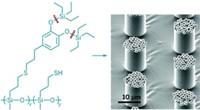Advertisement
Grab your lab coat. Let's get started
Welcome!
Welcome!
Create an account below to get 6 C&EN articles per month, receive newsletters and more - all free.
It seems this is your first time logging in online. Please enter the following information to continue.
As an ACS member you automatically get access to this site. All we need is few more details to create your reading experience.
Not you? Sign in with a different account.
Not you? Sign in with a different account.
ERROR 1
ERROR 1
ERROR 2
ERROR 2
ERROR 2
ERROR 2
ERROR 2
Password and Confirm password must match.
If you have an ACS member number, please enter it here so we can link this account to your membership. (optional)
ERROR 2
ACS values your privacy. By submitting your information, you are gaining access to C&EN and subscribing to our weekly newsletter. We use the information you provide to make your reading experience better, and we will never sell your data to third party members.
Environment
Science Concentrates
February 14, 2005
| A version of this story appeared in
Volume 83, Issue 7
One type of halogenated organic compound that accumulates in the tissues of aquatic animals comes from natural sources, according to a new study. These compounds, methoxylated polybrominated diphenyl ethers (MeO-PBDEs), are known natural products that are structurally similar to the petroleum-derived polybrominated diphenyl ethers used as flame retardants. Therefore, scientists have been uncertain of the origin of the bioaccumulated MeO-PBDEs. Using radiocarbon analysis of blubber from a North Atlantic whale, Christopher M. Reddy and coworkers at Woods Hole Oceanographic Institution, in Massachusetts, determined that the two most common MeO-PBDEs (shown) are of natural origin [Science, 307, 917 (2005)]. If the MeO-PBDEs were from industrial sources, they would have no detectable 14C. Instead, the MeO-PBDEs in the whale's blubber had 14C levels consistent with recently photosynthesized material. Their source is still uncertain because these two MeO-PBDEs have never been reported as natural products in the Atlantic.
The stress of a viral infection or other diseases can lead to programmed cell death in organisms. Junying Yuan of Harvard Medical School and colleagues have now identified a compound that can protect cells from this stress-induced apoptosis [Science, 307, 935 (2005)]. The compound, which they dubbed salubrinal (shown), blocks a step in the apoptosis pathway that involves dephosphorylation of the protein elF2∝. Salubrinal is selective for this particular reaction, permitting protein phosphatases to dephosphorylate other substrates without hindrance. This behavior belies the conventional wisdom about dephosphorylation inhibitors. "The catalytic subunits of most protein phosphatases show little intrinsic substrate preference," according to the researchers, so "the selective pharmacological inhibition of protein dephosphorylations has generally been regarded as difficult or impossible." Yuan's team says the results "may facilitate the discovery of inhibitors of other selected cell- or pathogen-directed dephosphorylations."
Eye surgery could get simpler, thanks to a new type of shape-memory polymer--material that can hold a temporary shape and then snap back to its original form when heated. Andreas Lendlein and coworkers at the Institute for Chemistry, Teltow, Germany, report the first amorphous, biodegradable, shape-memory polymer networks [Angew. Chem. Int. Ed., 44, 1188 (2005)]. Lendlein envisions making implants out of these shape-memory copolyester urethane networks. The material could be temporarily compressed so that it slips easily into a tiny incision and then returned to its permanent, medically relevant shape once inside the body. There would be no need for a second surgery to remove the biodegradable implant. Because the Teltow team's polymer is completely amorphous, it is more susceptible to hydrolysis than are previously reported semicrystalline biodegradable shape-memory polymers. Also, the material is transparent, making it particularly attractive for ophthalmic therapy, according to the researchers.
The first synthesis of a thiomarinol antibiotic--a family of natural products that includes the commercial topical medicine mupirocin (Bactroban) for skin infections--has been achieved by Xuri Gao and Dennis G. Hall of the University of Alberta, Edmonton [J. Am. Chem. Soc., 127, 1628 (2005)]. The thiomarinol derivative that they synthesized (shown) was isolated from a bacterium and is more potent than mupirocin. The compound's five contiguous stereocenters made it tricky to synthesize. But a catalytic asymmetric three-component reaction--between 3-borono-acrolein, a substituted enol ether, and an unsaturated aldehyde--had the requisite enantio-, diastereo-, and regioselectivity to enable construction of the antibiotic's pyran core. The new route "is amenable to the design of simplified analogs that could potentially demonstrate better potency and bioavailability" than naturally occurring thiomarinol antibiotics, Hall says.
A thermoreversible ion-binding system has been demonstrated by chemists at Eindhoven University of Technology, in the Netherlands [J. Am. Chem. Soc., 127, 1594 (2005)]. The work may lead to environmentally friendly water purifiers and new types of chemical delivery systems. The principal species associated with water hardness, Ca2+ and Ba2+, are commonly removed from water using ion-exchange resins. Spent resin columns are typically regenerated by washing with acid solutions. Now, Leo J. P. van den Broeke and coworkers have developed a water purification medium that can be regenerated just by altering the water temperature. The team reports that an ethylene oxide-propylene oxide triblock copolymer modified with carboxylic acid end groups forms a micellar structure that binds multivalent ions reversibly. Above a critical temperature (~30 °C, but tunable), the micelle forms spontaneously and binds ions efficiently. Lowering the temperature disassembles the structure and releases the ions.











Join the conversation
Contact the reporter
Submit a Letter to the Editor for publication
Engage with us on Twitter